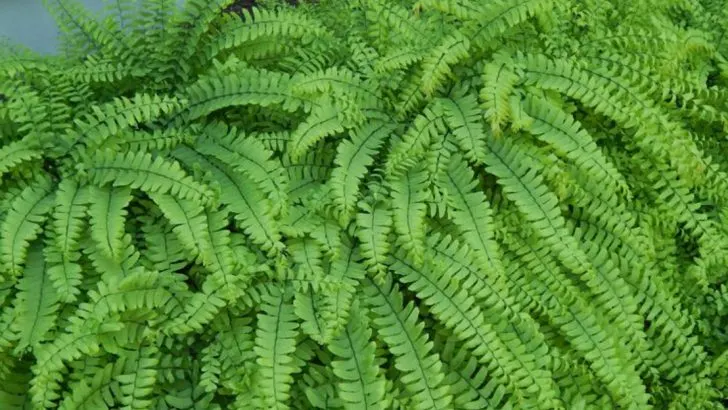Sometimes it’s not the flowers themselves that catch the eye — it’s what’s planted around them. The right background plants can make even the most common blooms appear richer, brighter, and more visually striking, thanks to subtle principles of color theory and perception.
In this article, we explore 14 foliage and filler plants that serve as the perfect backdrop to enhance your garden’s color palette. By understanding how our eyes interpret contrast, saturation, and hue, you can use these plants to make your flowers look extra vibrant — almost glowing.
Use a bit of psychology to design a garden that truly pops — no rare plants required.
Ferns

Ferns, with their delicate fronds, create a lush green backdrop that contrasts beautifully with colorful blooms. Their soft textures and consistent greenery provide a serene setting, allowing vibrant flowers to stand out. Consider using them around shady garden borders where they thrive without stealing the spotlight. A fun fact: ferns have existed for over 360 million years, making them living fossils in the plant world. Their ancient lineage and calming presence make them a unique addition to any flower garden.
Hostas

Hostas, known for their broad, lush foliage, offer a striking contrast to brightly colored blooms in shade gardens. Their leaves come in various shades, from deep green to variegated patterns, providing an ever-changing tapestry. These plants thrive in the shade, making them perfect companions for flowers that prefer less sunlight. Hostas are hardy and low-maintenance, which adds to their appeal. Fun fact: Hostas are native to Northeast Asia and were originally used in traditional medicine.
Bamboo
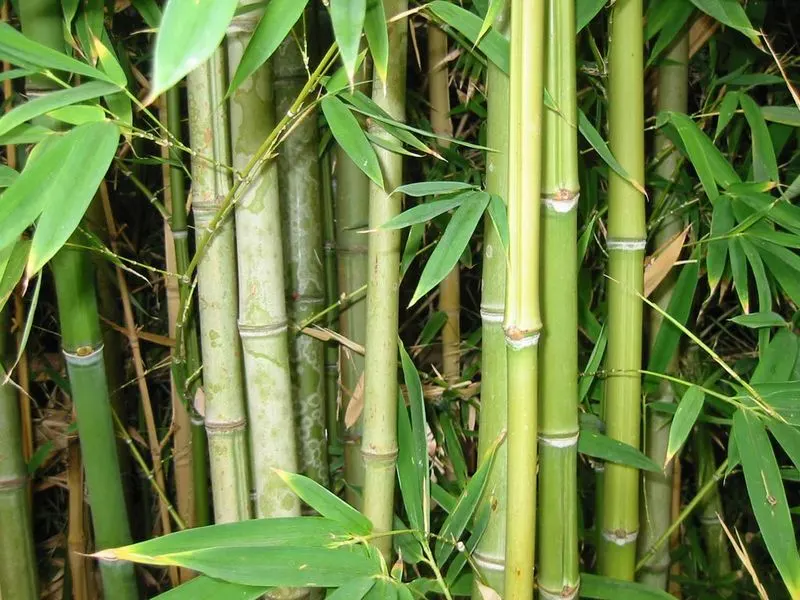
Tall and graceful, bamboo adds vertical interest and texture to garden spaces. Its slender stalks and feathery leaves create a gentle rustling sound that enhances the sensory experience of being among flowers. Ideal for privacy screens and windbreaks, bamboo can highlight low-growing flowers by adding height and structure. Interestingly, bamboo is one of the fastest-growing plants on Earth. Its rapid growth and versatility make it a valuable asset in creating dynamic garden landscapes.
Grasses
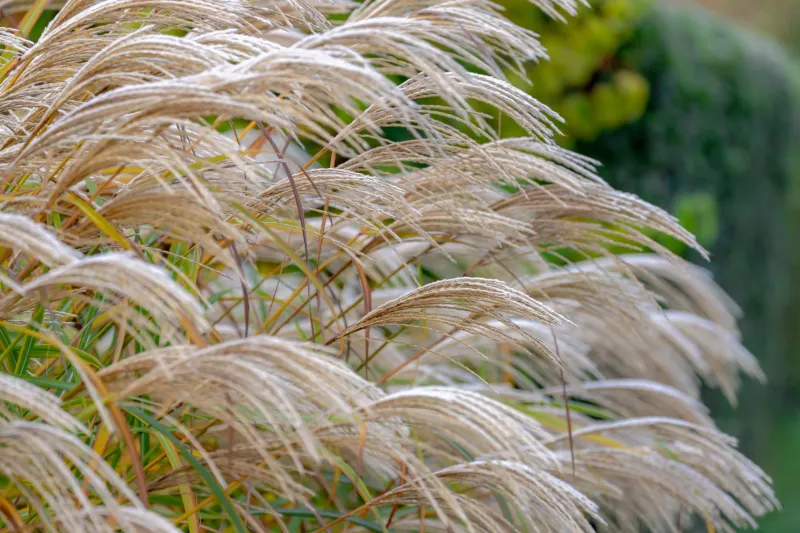
Ornamental grasses bring movement and grace to any garden, swaying gently with the breeze. Their fine textures and varying heights offer a subtle contrast to the solidity of flower blooms. Perfect for creating a natural, flowing backdrop, they can add a sense of depth and continuity. Many grasses, such as Miscanthus, also change color with the seasons, adding an ever-evolving palette to your garden. Their adaptability and resilience make them ideal companions for seasonal flowers.
Boxwood
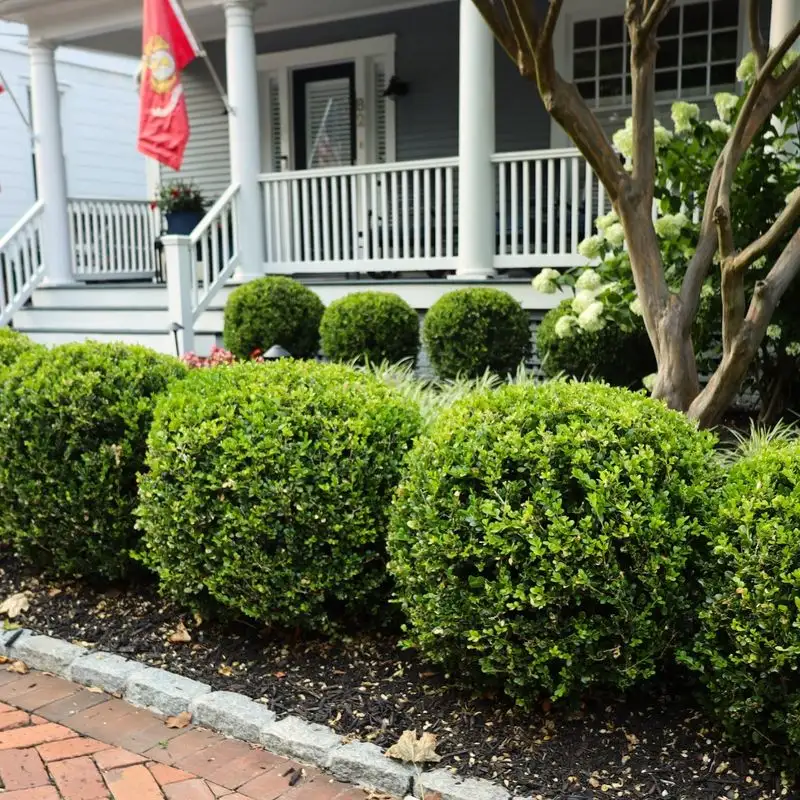
Boxwood offers a classic, structured look that provides a clean backdrop for vibrant flowers. Its dense, evergreen foliage can be shaped into hedges or topiaries, adding an element of elegance. The deep green leaves highlight colorful blossoms beautifully, enhancing their vivid tones. Boxwood is exceptionally hardy and can thrive in various climates. Historically, boxwood has been used in garden design since Roman times, valued for its timeless appeal and versatility.
Lavender
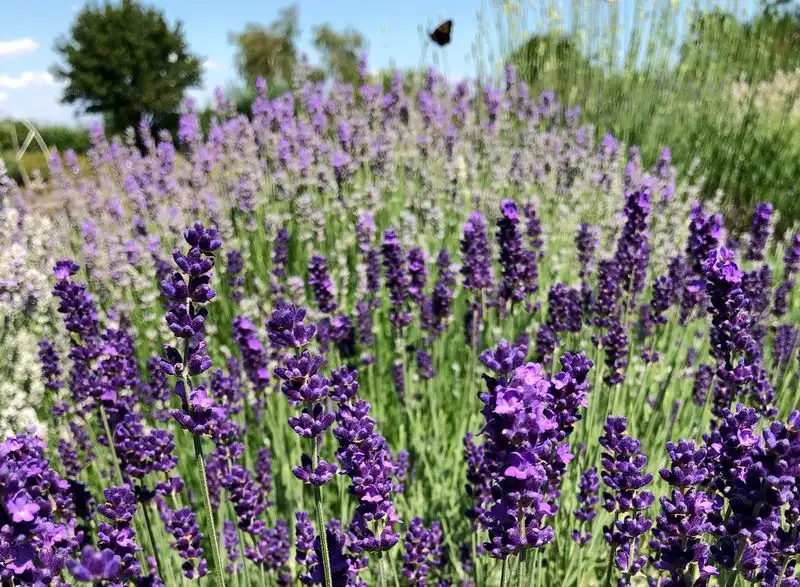
Lavender, with its fragrant purple spikes, complements colorful flowers while adding a calming aroma to the garden. Its silvery-green foliage contrasts well with brighter blooms, making it a favorite in cottage garden settings. Lavender attracts pollinators like bees and butterflies, enhancing the biodiversity of your garden. Besides its beauty, lavender has been used historically for its therapeutic properties, from ancient Roman baths to modern aromatherapy practices.
Holly
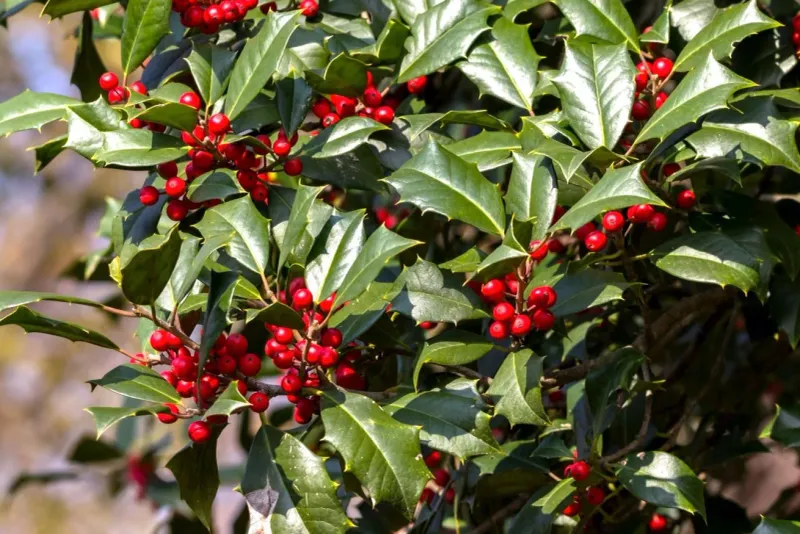
Holly bushes, known for their glossy green leaves and vibrant red berries, offer a festive backdrop even in the bleakest winters. They provide a striking contrast to winter blooms or evergreen perennials. Holly’s sharp leaves and bright berries have long been associated with Christmas, adding a seasonal touch to gardens. Besides their decorative appeal, hollies also provide shelter and food for birds during colder months, making them a beneficial addition to garden ecosystems.
Junipers
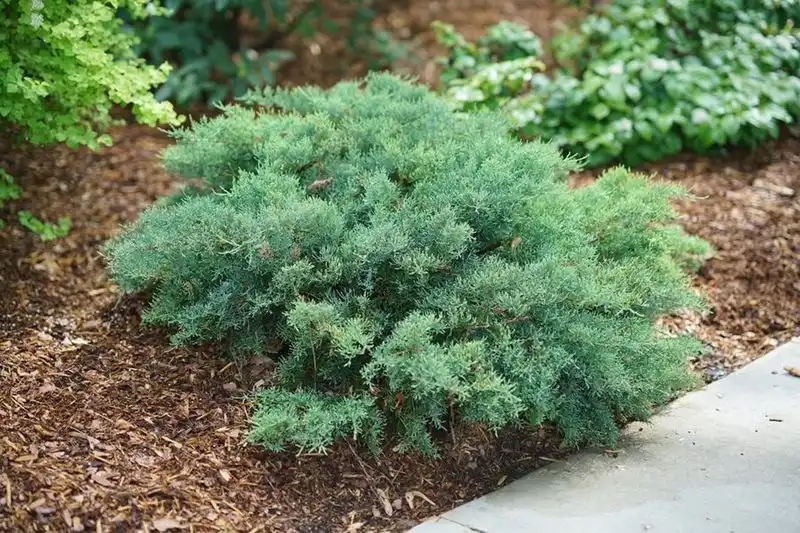
Junipers, with their blue-green needles and rugged textures, add an earthy element to garden landscapes. These drought-resistant plants come in various forms—from ground covers to towering trees—offering versatility in design. The cool tones of junipers enhance the warm hues of flowering plants, creating a harmonious balance. Historically, junipers have been used for their aromatic wood and berries in culinary and medicinal applications, making them a plant of many uses.
Cypress
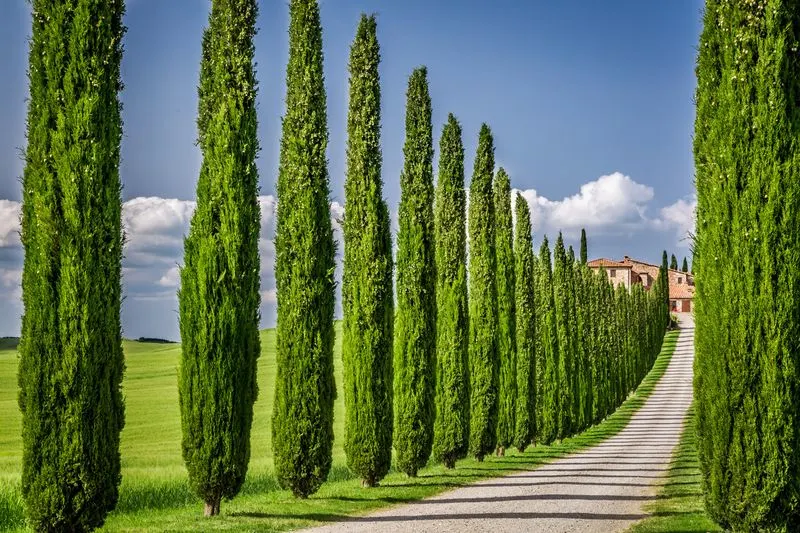
Cypress trees, with their towering presence and feathery foliage, add vertical elegance to garden settings. Their soft, muted colors create a backdrop that allows bright blossoms to shine. Cypress trees have a rich history, often symbolizing immortality and used in classical gardens. They are excellent for creating privacy screens, windbreaks, or simply adding a stately presence to your garden. The serene ambiance they impart makes them a timeless choice.
Hedera (Ivy)
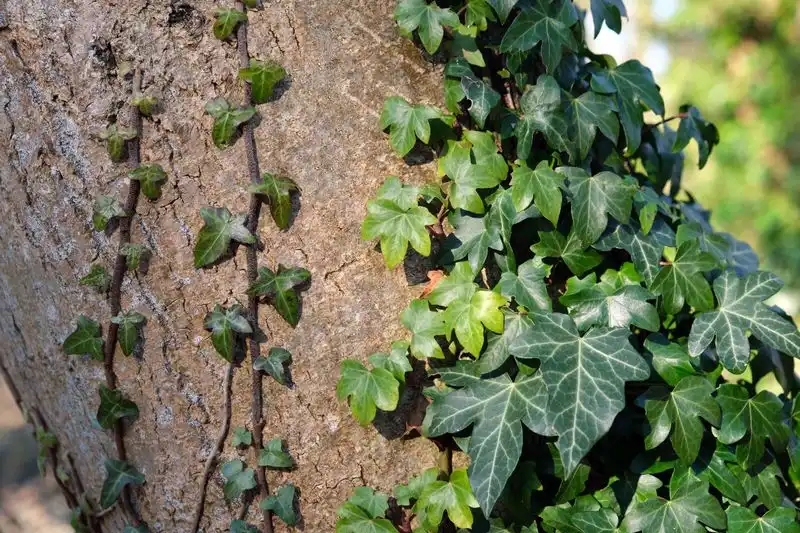
Ivy, with its cascading vines and rich green leaves, offers a touch of elegance and mystery. It can climb walls or drape over arbors, creating a lush backdrop for colorful blooms. The deep green foliage complements a wide variety of flowers, enhancing their vibrancy. Ivy’s hardy nature allows it to thrive in challenging conditions, making it a versatile choice for many settings. Historically, ivy has symbolized fidelity and eternity, adding a layer of depth to its beauty.
Sage
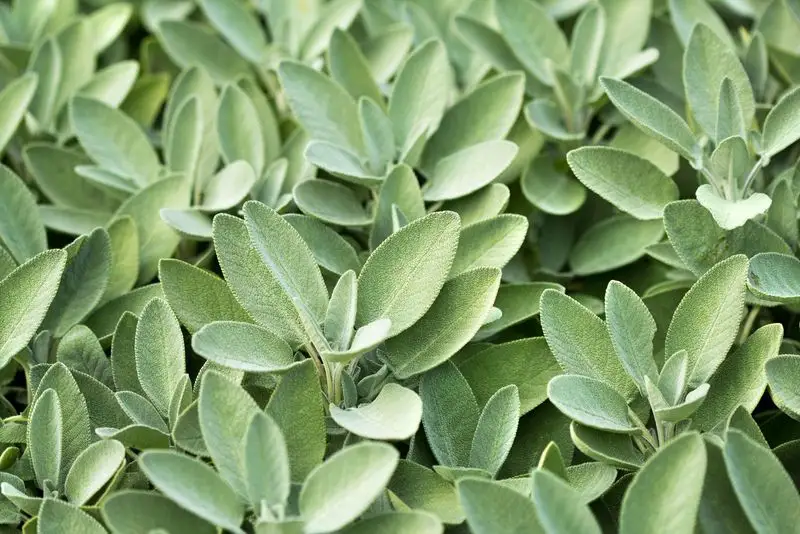
Sage, with its velvety leaves and soft purple flowers, adds a sensory delight to gardens. The subtle hues of sage foliage provide a neutral backdrop that lets vivid flowers pop. Known for its culinary and medicinal uses, sage also attracts pollinators, enhancing the ecological value of your garden. A historical tidbit: sage was revered by the Romans, who believed it symbolized domestic virtue and immortality. Its aromatic presence is both soothing and invigorating.
Rosemary
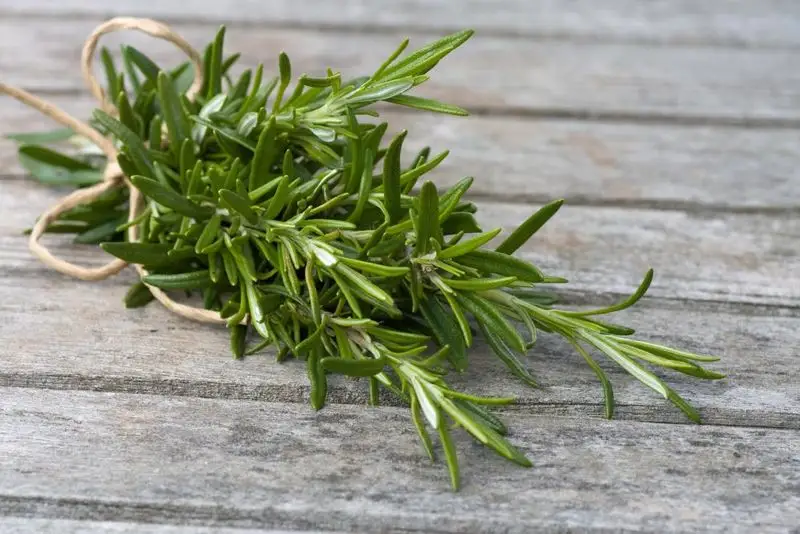
Rosemary, with its aromatic needles and delicate blue flowers, is both beautiful and practical. Its fine-textured foliage makes a perfect complement to bold, colorful flowers. The scent of rosemary is an added bonus, transforming any garden into a fragrant haven. Historically, rosemary symbolizes remembrance and has been used in rituals and cuisines for centuries. This multifunctional plant not only enhances aesthetics but also offers culinary delights.
Heuchera
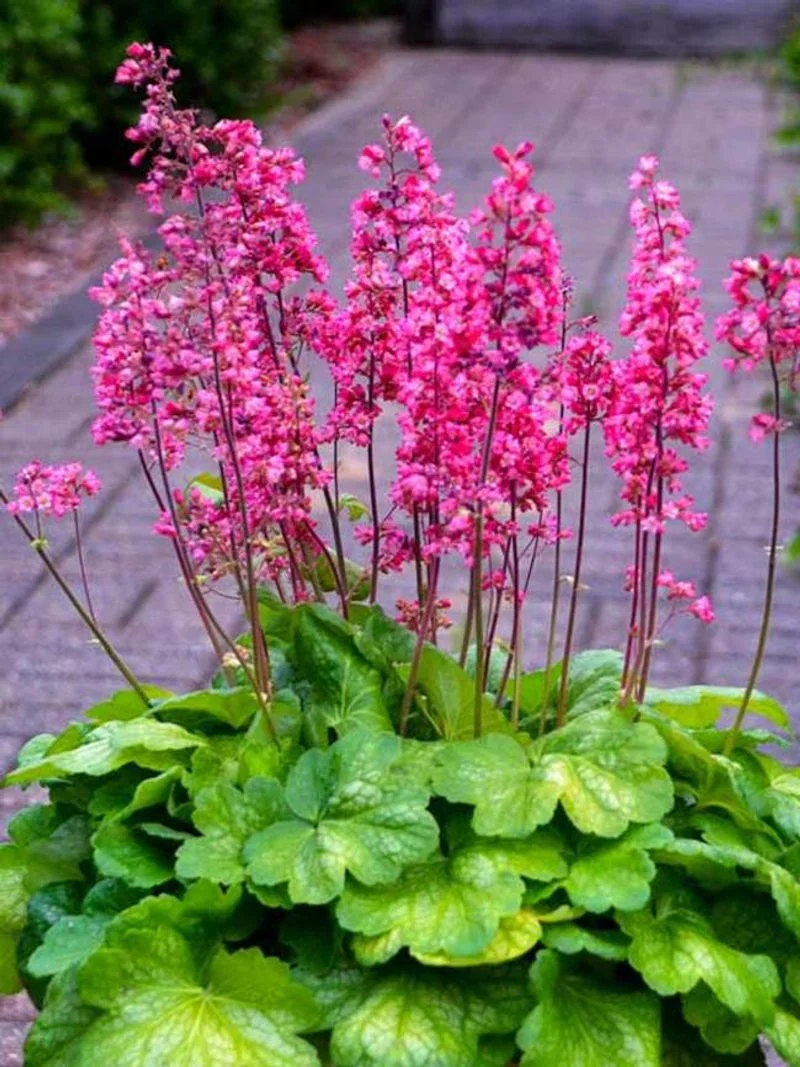
Heuchera, or coral bells, is renowned for its vibrant foliage that comes in a spectrum of colors, from deep burgundy to lime green. These hardy perennials provide a dynamic backdrop that makes flowers appear more vibrant. Heuchera’s adaptability to various light conditions and soil types makes it an easy addition to any garden. Interesting fact: Heuchera was named after Johann Heinrich von Heucher, an 18th-century German physician and botanist.
Camellias
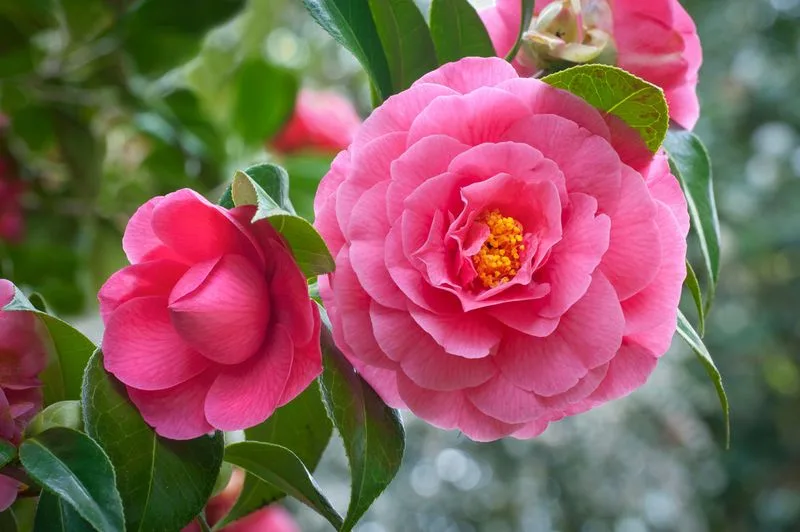
Camellias, with their glossy, evergreen leaves and spectacular blooms, provide a lush backdrop throughout the year. The blooms, ranging from white to deep red, attract attention and provide a lively contrast to other flowers. Camellias thrive in partially shaded areas, making them ideal for underplanting. Fun fact: Camellias are native to Asia and have been cultivated for centuries for their ornamental beauty and use in tea production. Their elegance and historical significance make them a favorite.

